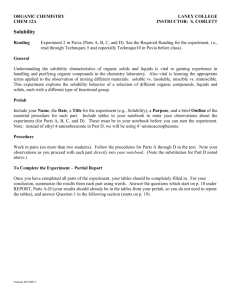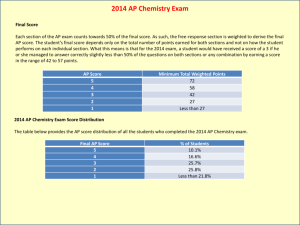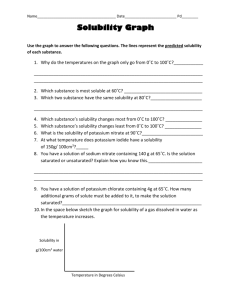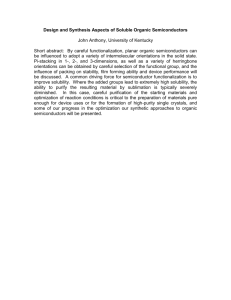Instructor`s Assessment Loop Recording Form
advertisement
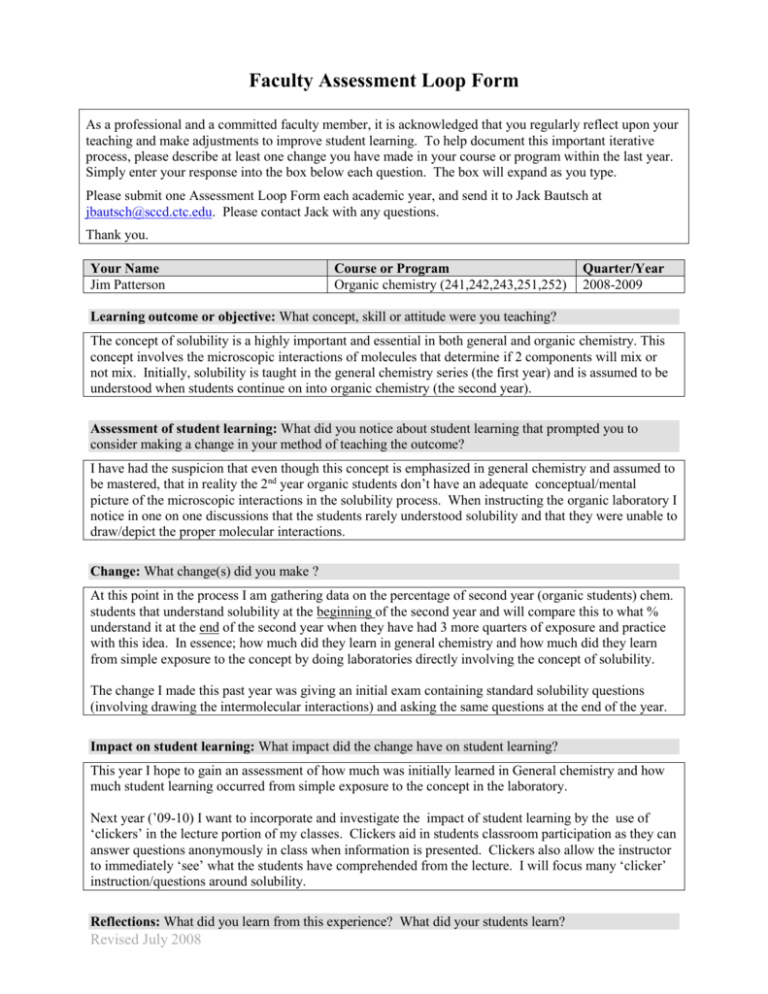
Faculty Assessment Loop Form As a professional and a committed faculty member, it is acknowledged that you regularly reflect upon your teaching and make adjustments to improve student learning. To help document this important iterative process, please describe at least one change you have made in your course or program within the last year. Simply enter your response into the box below each question. The box will expand as you type. Please submit one Assessment Loop Form each academic year, and send it to Jack Bautsch at jbautsch@sccd.ctc.edu. Please contact Jack with any questions. Thank you. Your Name Jim Patterson Course or Program Organic chemistry (241,242,243,251,252) Quarter/Year 2008-2009 Learning outcome or objective: What concept, skill or attitude were you teaching? The concept of solubility is a highly important and essential in both general and organic chemistry. This concept involves the microscopic interactions of molecules that determine if 2 components will mix or not mix. Initially, solubility is taught in the general chemistry series (the first year) and is assumed to be understood when students continue on into organic chemistry (the second year). Assessment of student learning: What did you notice about student learning that prompted you to consider making a change in your method of teaching the outcome? I have had the suspicion that even though this concept is emphasized in general chemistry and assumed to be mastered, that in reality the 2nd year organic students don’t have an adequate conceptual/mental picture of the microscopic interactions in the solubility process. When instructing the organic laboratory I notice in one on one discussions that the students rarely understood solubility and that they were unable to draw/depict the proper molecular interactions. Change: What change(s) did you make ? At this point in the process I am gathering data on the percentage of second year (organic students) chem. students that understand solubility at the beginning of the second year and will compare this to what % understand it at the end of the second year when they have had 3 more quarters of exposure and practice with this idea. In essence; how much did they learn in general chemistry and how much did they learn from simple exposure to the concept by doing laboratories directly involving the concept of solubility. The change I made this past year was giving an initial exam containing standard solubility questions (involving drawing the intermolecular interactions) and asking the same questions at the end of the year. Impact on student learning: What impact did the change have on student learning? This year I hope to gain an assessment of how much was initially learned in General chemistry and how much student learning occurred from simple exposure to the concept in the laboratory. Next year (’09-10) I want to incorporate and investigate the impact of student learning by the use of ‘clickers’ in the lecture portion of my classes. Clickers aid in students classroom participation as they can answer questions anonymously in class when information is presented. Clickers also allow the instructor to immediately ‘see’ what the students have comprehended from the lecture. I will focus many ‘clicker’ instruction/questions around solubility. Reflections: What did you learn from this experience? What did your students learn? Revised July 2008 I have initially seen that student knowledge I have assumed was there was not. At the end of this quarters when I once again test on solubility I will know a little more about how much is being learned by subsequent exposure (in lab primarily) to the concept. New question(s): Did this experience suggest any new questions or “next steps”? For now it is to explore the effect of ‘clickers’ on efficiency of learning the concept of solubility as compared to that of a standard lecture. Sharing this example: May we post this example so that others may learn from it? Yes Thank You Revised July 2008
